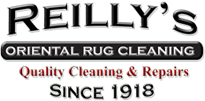Top Tips For Protecting Your Floor During Winter
Although it is widely accepted practice to apply salt and sand on walkways, it might turn out to be extremely harmful for the floor surfaces in your facility. Salt and sand are usually applied in order to prevent people from slipping on snow and ice. The reaction of these substances together might reduce the longevity of floors, while increasing repair and floor care costs, and forcing you to contact a professional. This article will explain some easy steps to prevent something like that from happening before mitigating the water damage problem.
The Importance of Proper Matting and Moisture Levels
In the winter time, it can be inevitable that your customers and employees might track snow into your facility with their shoes. The ice and snow that they introduce to your building eventually melts and turns into puddles of water. One way to mitigate this problem is to implement the use of mats especially at the entrance of your facility. This can potentially reduce the incidences of people slipping and also damage to your floors.
What you can do is place a scraping mat outside the building or in the entry walkways. Unknowingly, customers will engage in removing harmful substances from their shoes unto the mat. Additionally, you can add another absorbent mat on the inside of the building after the scraping mat so that the snow and ice continues to dislodge as they approach the exposed floor. It is important that you use mats with rubber pads so that no one slips on mats and injuries can be avoided.
How to Solve the Sand and Salt Problem
As mentioned earlier, salt and sand particles are used to prevent people from falling on slippery snow and ice surfaces. However, this is a big mistake because it can erode your floor finishes when they are brought into your building with shoes. Whilst the suggested matting can prevent such materials from being brought into your facility, it is imperative that floors are regularly cleaned and buffed because they can cause water to start pooling and melt through the floor wax.
Asphalt is another material that is easily broken off and brought into buildings unknowingly. Thus, it is also equally important that floors are vacuumed regularly to remove such particles and prevent them from ruining the quality of your expensive floors.
Utilize a Good Water Damage Prevention System
- Buy sufficient materials: Be sure to ensure that near the entrance of your facility there is a station that contains all the required maintenance equipment such as mops, vacuums and buckets. It is also important that the station consists of cleaning chemicals that are necessary to maintain your floors.
- Use proper signage: Signage can be extremely useful in such cases because they can communicate with and warn people that your floors are wet, allowing them to proceed with caution. The signs can also inform your customers that is customary to dry their shoes on your installed mats.
- Replace the matting regularly: A good interval between replacing your mats would be about every four hours, especially during periods of heavy snowfall.

0 Comment